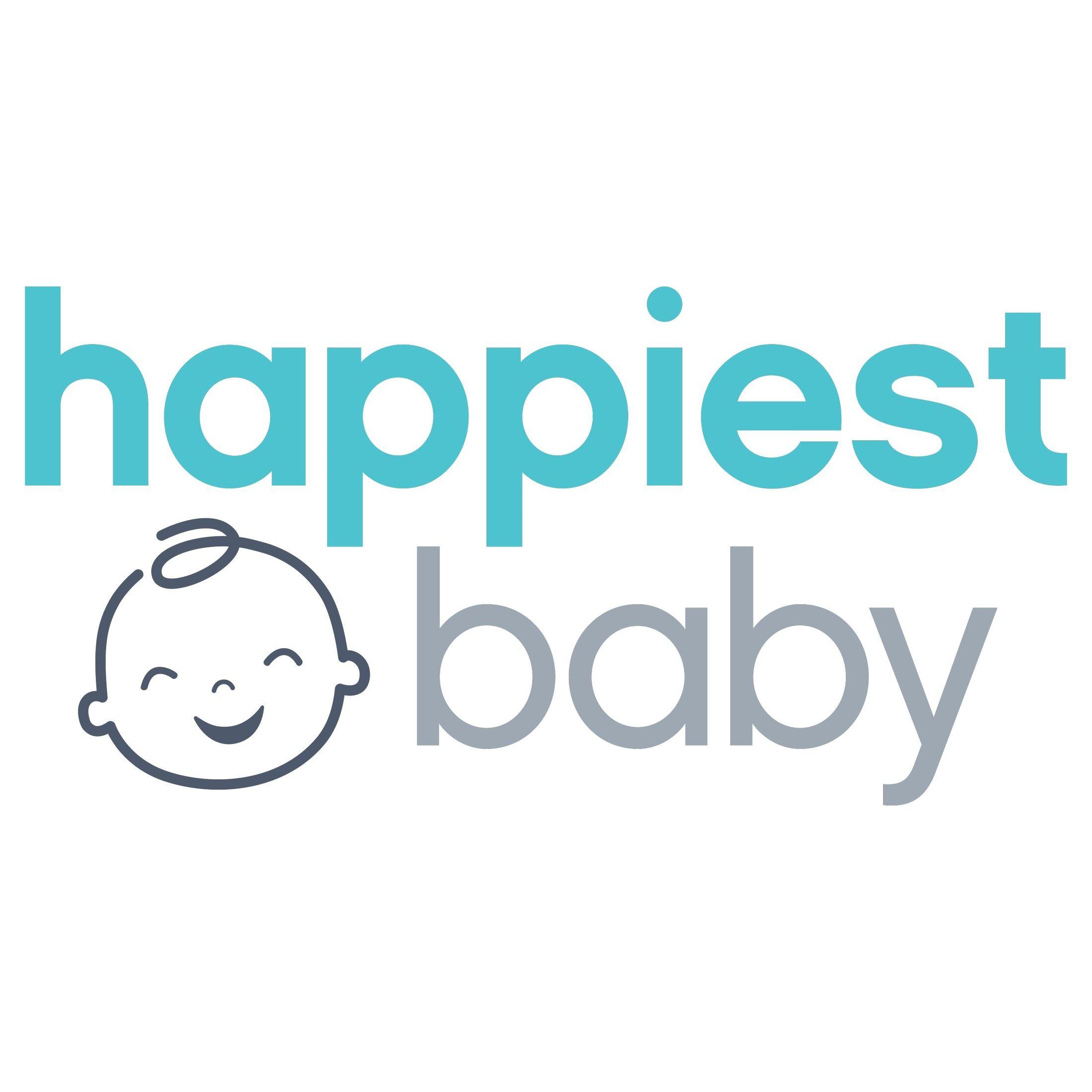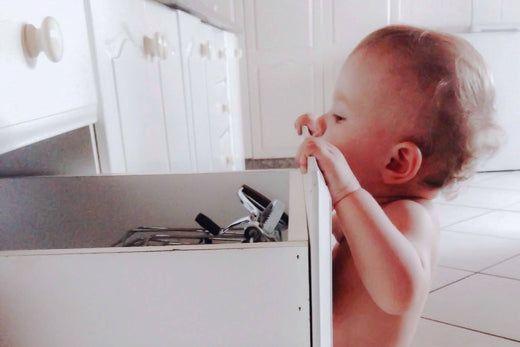BABY
10 Household Objects to Keep Out of Baby's Reach
Keep a keen eye out for the following household objects to keep far away from curious hands.

Written by
Happiest Baby Staff

SHARE THIS ARTICLE
PARENT PICKS
Bestsellers
BABY

Written by
Happiest Baby Staff

SHARE THIS ARTICLE
Bestsellers
Between about 6 and 9 months your little one is likely on the move, creeping and crawling all over the place…and you will never look at your home the same way again. So many nooks baby can get into; so many wires to pull; so many sharp corners. Gah! But do not panic!
First, get some baby gates to keep your newly mobile toddler away from stairs. Next, get down on your hands and knees and explore your house to see what your child would see. You might be surprised by what you find! Keep a keen eye out for the following household objects to keep far away from curious hands.
The plastic wrap that toilet paper is packaged in; the bags you bring your groceries home in; dry cleaning bags: All plastic bags are dangerous and can cause suffocation if your baby gets the bag over their heads. Keep bags safely tucked away where your child cannot reach them.
Yes, it is super cute when babies and toddlers hang out with a beloved pet, but it is less cute—and potentially dangerous—if they get pet food or toys in their mouths and choke.
Lighters, coins, hairpins, tubes of lip balm, keys…anything that could have fallen out of a pocket or purse and landed on the floor could be dangerous to your baby. Do daily sweeps to make sure the floors are clear of tiny objects that your child could choke on.
Kids love playing with remote controls, but because the batteries in them pose a serious risk, they should be out of reach. Or, try using packing tape to cover the battery flap so that your baby cannot access the batteries.
Keep all gadgets that get plugged into an electrical source or that could shatter and break away from young kids.
Are your dishwashing detergents, stain-removing sponges, or cleaning sprays, powders, gels, and liquids, under your sink…and easily accessible to kids? If so, get a babyproofing lock for the cabinet, ASAP—or store everything up high.
The same rule applies to personal care items such as makeup, soaps, bug sprays, sunscreens, hair styling products, and equipment such as curling irons, blow dryers, nail polish, and any other item that contains chemicals. All should be locked up.
Pen caps, pencil erasers, staples, paperclips, and scissors: If your child can reach any small items on your desk, it is time to lock them away.
Do you toss your purse down when you walk through the door? If you do, stop! Your baby can easily reach inside and get their hands on items that can hurt them, like medications, keys, loose change, and breath mints.
Balloons, marbles, coins, watch batteries, and more are all very dangerous to babies and children. For a more complete list, review common choking hazards.
To help keep the items above out of your baby’s reach—and to further safeguard them—it is time to get a handle of babyproofing. Here, a quick primer with a few baby proofing must-dos:
For more on child safety, check out:
What to Do If Your Child Swallowed a Foreign Object
Water Safety Rules for Kids and Parents
5 Ways to Protect Your Kids From Guns
Disclaimer: The information on our site is NOT medical advice for any specific person or condition. It is only meant as general information. If you have any medical questions and concerns about your child or yourself, please contact your health provider. Breastmilk is the best source of nutrition for babies. It is important that, in preparation for and during breastfeeding, mothers eat a healthy, balanced diet. Combined breast- and bottle-feeding in the first weeks of life may reduce the supply of a mother's breastmilk and reversing the decision not to breastfeed is difficult. If you do decide to use infant formula, you should follow instructions carefully.